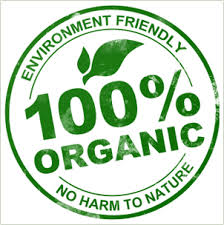The key characteristics of organic farming include:
- Protecting the long term
fertility of soils by maintaining organic matter levels, encouraging soil
biological activity, and careful mechanical intervention
- Providing crop nutrients
indirectly using relatively insoluble nutrient sources which are made
available to the plant by the action of soil micro-organisms
- Nitrogen self-sufficiency
through the use of legumes and biological nitrogen fixation, as well as effective
recycling of organic materials including crop residues and livestock
manures
- Weed, disease and pest
control relying primarily on crop rotations, natural predators, diversity,
organic manuring, resistant varieties and limited (preferably minimal) thermal,
biological and chemical intervention
- The extensive management of
livestock, paying full regard to their evolutionary adaptations,
behavioural needs and animal welfare issues with respect to nutrition,
housing, health, breeding and rearing
- Careful attention to the impact of the farming system on the wider environment and the conservation of wildlife and natural habitats
- ADVANTAGES:
Better taste and
more nutrition.
Costs are lowered
The environment
doesn’t sufferPoison-free
Food Keeps Longer
Disease and Pest Resistance
Weed Competitiveness
Lower Input Costs
Drought Resistance
Added Value
DISADVANTAGES:
It’s a whole lot
more work
The consumer pays the
priceCross Breeding Happens
Productivity is less
Cultivation is hard
Takes a lot of time
It requires considerably more skill.

No comments:
Post a Comment